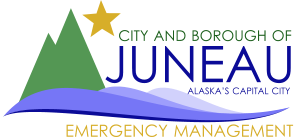Avalanche Advisory Archive Pre-2016
| Date Issued: | 2013-05-06 |
|---|---|
| Danger: | 2 |
| Trend: | 3 |
| Probability: | 3 |
| Size: | 2 |
| Problem: | 0 |
| Discussion: | Greetings Juneau! Thank you for a great Season! The Daily Avalanche Advisories for 2012-2013 Season have been discontinued. Please be aware that does not mean there is no longer avalanche danger if you are playing in snow country. This is simply to say that the snow in the urban enviroments will be monitored and yet for the most part we have seen enough snow in the avalanche paths melt to the point where they are no longer a concern. Should conditions change special avalanche advisories will be issued. Things to consider if you head into the hills. Surface loose wet snow avalanche activity will continue to occur this spring. Usually this type of instability forms in response to daytime warming. With many previous melt-freeze cycles and rain events having already occurred this past winter and spring, free water drainage from the snowpack is well established. This is expected to keep wet snow avalanche activity limited to human triggered loose wet avalanches rather than wet slab avalanches. Cloudy skies overnight and air temperatures above freezing do not allow the snowpack to refreeze very well. When the snowpack does not refreeze overnight, other springtime activities that do not involve snow travel on steep slopes represent more prudent choices. Under clear skies, the top few inches of the snowpack will often refreeze despite near or slightly above freezing air temperatures. This superficial refreeze usually allows for a short period of good travel conditions during the early morning hours before surface wet snow instability becomes a concern. If a solid overnight refreeze occurs, getting out early and finishing in time to have a mid day barbecue should be your goal. Start with east aspects and follow the sun to south, then to west, and finally to north aspects. Get off of your equipment on a regular basis and check boot penetration depth. Boot-top deep wet snow, significant roller ball activity, or any wet snow avalanche results from small test slopes all indicate that wet snow instabilities can occur. Moving to a different aspect with less sun exposure, terrain less than 25 degrees in slope angle without steeper terrain above, or simply heading over to the beach for a picnic all represent great choices at this point. As a matter of etiquette, do not leave deep ruts in a slope that will freeze overnight and ruin the slope for others the next day. Natural and human triggered wind slab avalanches may occur during and after any late season storms. Expect a period of snowpack instability during the storm itself, then a second cycle of avalanche activity as rapid warming occurs post storm. During the storm, watch for typical signs of mid winter instability such as recent avalanche activity, wind loading, collapse, audible whumpfing sounds, and/or shooting cracks. Post storm, new snow will be very sensitive to rapid warming and direct sunlight. Pay close attention to layer bonding within the new snow and to the old snow surface beneath it. It can lose strength rapidly as the day progresses causing a significant increase in avalanche danger. Other hazards such as cornice collapse, moats, glide cracks, and open creeks exist. Stay well back from abrupt edges along ridgelines as human triggered cornice collapse will remain possible during the spring. Stay out from under cornice areas that are not well frozen, especially if you can see water dripping from the cornice. Areas of weak snow around rocks, vegetation, and along the base of cliff bands exist. Move carefully around these features as the thin bridges of snow could collapse under body weight allowing you to fall into a melted hole next to the feature. Exercise caution when traveling near or attempting to cross creeks as wet snow along the banks can collapse under the weight of a person. As the season begins to change next fall, the morning air becomes crisp, and the days become shorter, check back on our page for advisories to begin once again. Enjoy your spring and summer and we will see you again right here in the fall. THANK YOU JUNEAU FOR PLAYING SAFE! |
